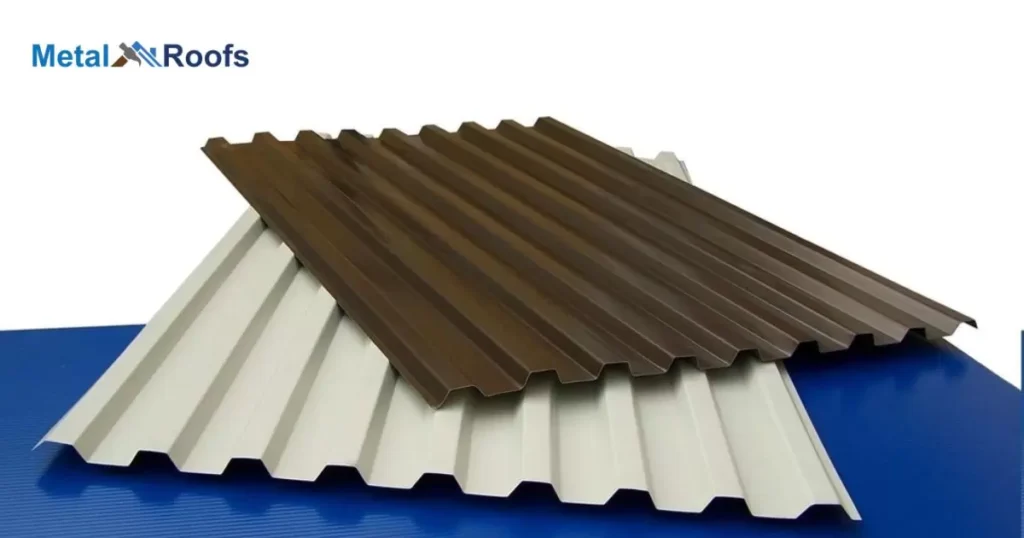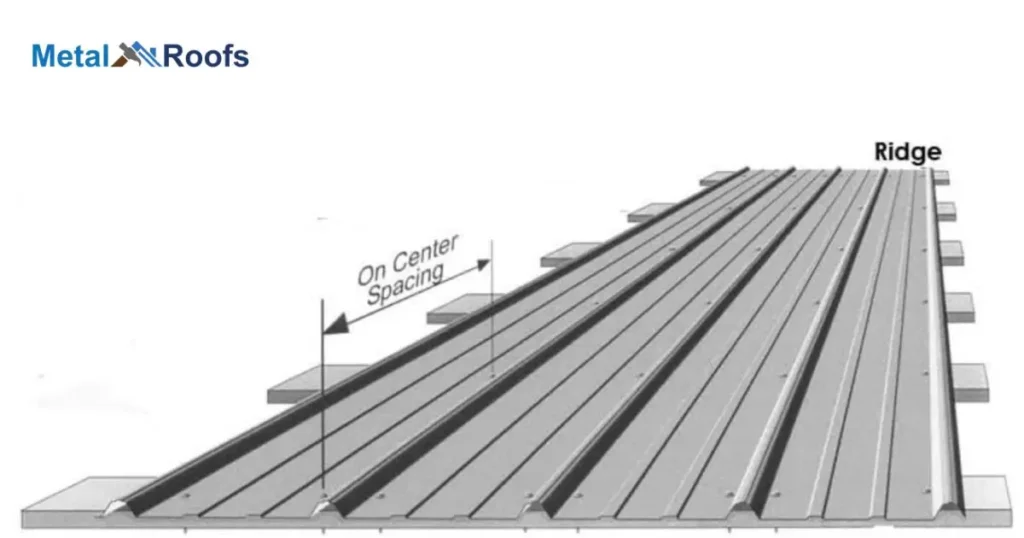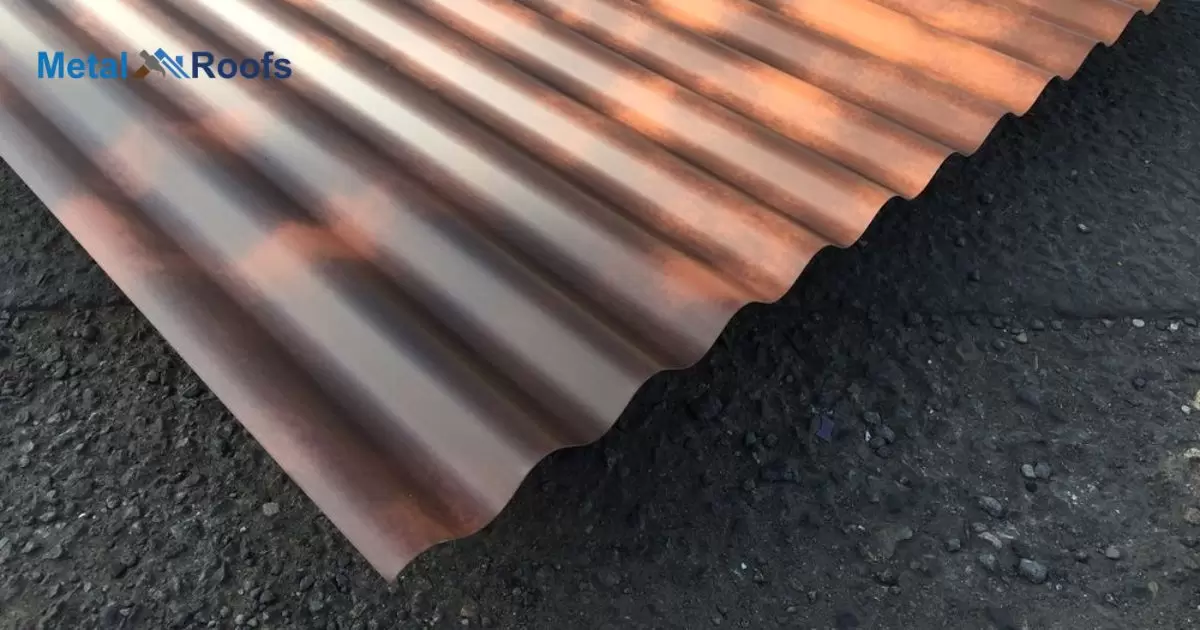Metal roofing sheets are thin, flat pieces of metal like aluminum or steel used to cover roofs. The sheets interlock and overlap to form a waterproof barrier. Metal roofing is long-lasting, fire resistant, and energy efficient. It comes in various colors and styles like standing seam, corrugated, and flat.
Metal roofing sheets cover the roof in overlapping rows. figure out how many you need. measure the total square footage of your roof. divide by how much one sheet covers. that gives total sheets needed. add 10% extra for waste and overlaps. then you’ll know how many sheets of metal roofing you need.
The number of metal roofing sheets needed depends on the roof size. Measure the total square footage. Divide by the coverage of each sheet. Add extra for overlaps and waste. The pitch and style impact coverage per sheet. Low slopes need more overlap.
Key Takeaways
- Accurately measure roof dimensions to determine the total area.
- Consider the pitch of your roof when calculating the required number of sheets.
- Divide the adjusted roof area by the size of one metal roofing sheet.
- Round up to the nearest whole number and add extra sheets for waste or errors.
- Verify measurements before placing your order to ensure accuracy and avoid shortages.
Measure How Many Metal Roof Sheets Your Project Needs
To measure how many metal roof sheets your project needs, start by measuring your roof’s length and width. Then, calculate the total roof area by multiplying these dimensions. Consider the pitch of your roof, as steeper roofs require more sheets.
Adjust the area accordingly, and divide by the size of one sheet to find the total number needed. Metal roofs withstand various weather conditions, making them a durable choice for many homeowners. Finally, round up to the nearest whole number for accuracy.
Understand Your Roof’s Dimensions
Knowing your roof’s dimensions is essential. Measure the length and width accurately. These measurements form the basis for calculating the total roof area. Understanding this helps determine the precise number of metal roofing sheets needed for your project.
Calculate Roof Area
Measure your roof’s length and width. Next, multiply these measurements together. Consider the roof’s pitch and adjust the calculated area accordingly. Finally, divide the adjusted area by the size of one metal roofing sheet to find out how many sheets are required for your project.
Measure One Metal Sheet Profile
Measure the length and width of a single metal sheet. Ensure accuracy by using a reliable measuring tool. Record these dimensions for reference when calculating the number of sheets needed for your project.
Calculate the Number of Sheets
To calculate the number of sheets needed, multiply the total roof area by the pitch factor. Then, divide the adjusted area by the size of one sheet. Remember to round up to the nearest whole number for an accurate count.
Double Check and Order
After calculating the required number of metal roofing sheets, double-check your measurements. Ensure accuracy by reviewing the dimensions and calculations. Once confirmed, proceed to order the necessary sheets. Take into account any additional sheets for waste or mistakes.
Factors Influence the Number of Metal Roofing Sheets Required

| Factors | Description |
| Roof Dimensions | Length and width of the roof impact coverage. |
| Roof Pitch | Steeper roofs require more overlap, affecting sheet count. |
| Complex Features | Additional elements like dormers increase sheet quantity. |
Several factors influence the number of metal roofing sheets required. Roof dimensions, including length and width, play a crucial role. Additionally, the pitch of the roof affects the amount of material needed.
Complex roof features such as dormers or valleys may also increase the quantity required. By carefully assessing these factors, you can accurately determine the number of sheets needed for your project.
Calculate the Number of Sheets Needed
To accurately calculate the number of metal roofing sheets needed, measure your roof’s length and width. Adjust for pitch if necessary, then divide the total roof area by the size of one sheet. Round up to the nearest whole number to determine the quantity required.
Once you have the calculated quantity, it’s prudent to add a few extra sheets for waste or potential errors. This ensures you have enough materials to complete the project without delays. Double-check your calculations before proceeding to order the metal roofing sheets.
Ensure Proper Installation of Metal Roofing Sheets
Begin by preparing the roof surface, ensuring it’s clean and smooth. Lay the metal roofing sheets carefully, starting from the bottom and working upwards. Secure each sheet firmly using appropriate fasteners to prevent shifting or leaks.
After placing the sheets, double-check alignment and overlap to maintain consistency. Pay attention to details such as flashing and edge trim to ensure a watertight seal. Finally, inspect the installation for any gaps or inconsistencies and make necessary adjustments for a secure and long-lasting metal roof.
Tips for Storing Excess Metal Roofing Sheets Properly
Storing excess metal roofing sheets properly is essential to ensure they remain in good condition for future use. Here are some tips to help you store them effectively:
Choose a Covered Area: Store the metal roofing sheets in a covered area such as a garage, shed, or warehouse. This protects them from exposure to the elements, including rain, snow, and sunlight.
Keep Them Dry: Moisture can cause metal roofing sheets to rust or corrode over time. Make sure the storage area is dry and well-ventilated to prevent condensation from building up.
Elevate Off the Ground: Store the sheets on pallets or racks to keep them off the ground. This helps prevent moisture from seeping in from the floor and reduces the risk of rusting.
Stack Carefully: Stack the sheets neatly to prevent them from bending, warping, or getting damaged. Use spacers between each layer to allow for airflow and prevent scratches.
Cover with Tarps: If storing the sheets outdoors or in a semi-covered area, cover them with waterproof tarps or plastic sheeting to provide an extra layer of protection against moisture and sunlight.
Label Clearly: Clearly label each stack of roofing sheets with information such as the type of metal, gauge, and dimensions. This makes it easier to identify them later when you need to use them.
Rotate Stock: If you have a large inventory of metal roofing sheets, consider implementing a first-in-first-out (FIFO) system to rotate stock. This ensures that older sheets are used first, reducing the risk of them deteriorating over time.
Inspect Regularly: Periodically inspect the stored metal roofing sheets for any signs of damage, corrosion, or pest infestation. Address any issues promptly to prevent further damage.
By following these tips, you can ensure that your excess metal roofing sheets remain in optimal condition until they are needed for future projects.
Estimate The Length of the Sheets

Before ordering, estimate the length of the metal roofing sheets. Multiply the number of sheets needed by their length to determine total linear footage. This ensures you order the correct amount for your project.
Once you have the total linear footage, you can confidently place your order. To consider any additional length needed for overlapping or trimming during installation. Double-check your calculations to avoid ordering too much or too little.
Frequently Asked Questions
How do I calculate how much material I need for a metal roof?
Calculate the total roof area by multiplying the length and width, then divide by the size of one metal roofing sheet.
How many metal roofing panels do I need?
You need to measure your roof’s dimensions and divide by the size of one panel to determine the quantity needed.
How many sheets of sheet metal do I need?
You’ll need to measure your roof’s dimensions and divide by the size of one sheet to find out. Consider adding a few extra sheets for waste or mistakes.
Conclusion
Know your roof size in square feet. Find the coverage area per metal sheet. Divide total area by sheet coverage. Add 10-20% for waste and overlaps. Compare different metals and profiles. Get an accurate materials list. Order 5-10% extra sheets just in case. Calculate precisely and don’t run short.
Installing metal roofing takes planning. Measure carefully for an accurate sheet count. Factor in design, pitch, and overlaps. Order extra sheets to be safe. Use a roofing calculator or consult a pro if unsure. Taking time to determine sheets needed will save money and hassle in the long run. Plan ahead for a smooth metal roofing project.











